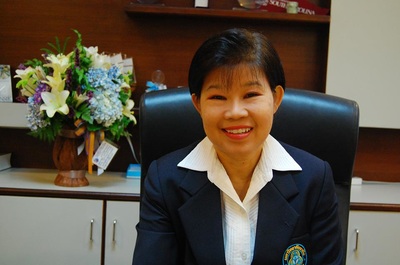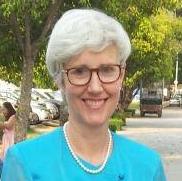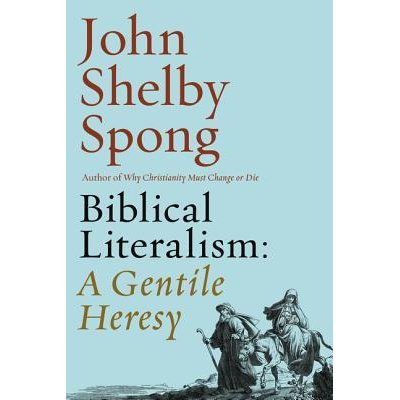|
Tira Kitner thought she preferred to work alone now that granddaughter Maggie was away over the hills at Hogwarts. At first she resented the two laddies the Ministry of Magic had sent as her assistants for a broom shop. In fact, Tira, being the independent Highland Scot she was, didn’t think much of the whole plan to put her back to work. But the pre-paid order for ten brooms was persuasive.
“Pre-paid,” she muttered as if she’d meant to say “PRE-POSterous!” No Scot would do such a thing as pay before they had to, at least none she knew, who were mostly confined to the vicinity of Gilfinning, which was not a large population sample. The thing that aggravated the old woman was the idea of being roped into broom-making again, and given “orders” to produce ten brooms with the ominous promise of “still more orders” to come, plus the intrusion of two utter strangers. In the end things took a bonnie turn. The boys, for a start, were precious lads, come to that. She’d have resented feeding them, but from the first day on the job they brought food enough for the three of them. So that complaint never got hold of her soul. A more gnawing suspicion was that the boys had been foisted on her, not so much to help lighten her burden, as to ferret out her secrets. Tira Kitner was the last living witch who knew how to make brooms “the old way”. She was vaguely aware that one thin line of her ancestry went back to Poland and that was the line that carried the old broom lore. Even though she was the last and then the lore would be lost unless Maggie took it up, she harbored the suspicion the boys would abscond with the secret that was hers, her own, her one claim. She could not say it was a claim to fame or even a mark of her identity, since it was a secret she thought no one had any idea she knew. But she knew the secret and it was one she loathed to disclose. Better to have the secret perish with her than to trust unworthy witches with it. As the old lore had it, only witches could make truly bewitched brooms. Wizards did not have the patience or the keen eye for details. So, she decided, the boys were safe because they’d be sure to miss the key clues to the old way of broom-making. She could use the boys to fetch and follow. If Dean Thomas had given her a couple of lassies she’d have been less inclined to go back to broom-making. She had quit, she told herself, to preserve the secret, although the work was really more than she could handle. She had refused to admit this. Admitting it would have blocked her returning to the craft. Broom lore in magical Britain was locked in the late Middle Ages. Brooms to fly had to look like they did in peasant villages 500 years ago, all twigs and sticks. They had to be enchanted, but little things made the difference between one model and another in terms of aerodynamics. In Harry Potter’s time, when he was seeker and then captain of the Gryffindor team, the Firebolt was the fastest broom in the sky. It took a broom-flying master to handle one. Real Quidditch professionals loved the game because they trusted their brooms. Quidditch magazines felt that broom science had advanced about as far as it could go. Amazingly, Tira Kitner did not know anything about Quidditch. She may have heard about it but it went in one ear and out the other. She made brooms for the love of broom-making, a purer love than Ollivander had for wand-making. Ollivander was dedicated to producing wands that chose a witch or wizard so he could see how that marriage worked out. He remembered every wand he had ever made and who it had gone to. Tira could barely remember ten of the hundreds of brooms she, her mother and grandmother had made, and she couldn’t remember a single witch who had bought one, nor did she care. So she was not the least bit curious about who had ordered the ten brooms for which she had been paid in advance. She was motivated entirely by her Scottish sense of duty. Since she had taken the money she was honor-bound to make the brooms. Dean Thomas and his colleagues in the Ministry of Magic probably thought that Tira Kitner would need help securing scarce products to manufacture the brooms they had ordered. Their investigators had rounded up two 50-year-old samples of brooms made by Tira and her mother. The components were hard to find these days. Strong young men would be needed to scale the mountain where the last of the vines grew that bound the brooms the Ministry had studied. “Nae,” Tira said when Bobbie volunteered to make the arduous search for vines to bind the brooms. “Nae” was all she said, but she turned up with a leather thong that she said would work well. In fact, wire would work even better and produce a tighter broom that lasted longer, but Tira had concerns about lightning in stormy flights. The same thing with the handles. Any wood would do. Perfectly matched twigs were not needed either. Plain old broom straw would produce a satisfactory broom, she insisted. Before long Bobbie and Rory were beginning to doubt the stories they’d heard in London about the Gilfinning witches’ wonderful brooms. All the folks wanted to know in the Department of Magical Games and Sports was “How do they fly?” The two 50-year-old models out-flew Comets and Nimbuses. Finally, the ten brooms were finished except for the family secret. In the end, Tira had to relent. It was a contest of principles. She resisted the idea of sharing the secret with the boys, but she realized she herself could not take the brooms for their final treatment, without which they would just be ordinary flying brooms. Bobbie and Rory were aware that Tira was procrastinating for some reason. The brooms were finished and ready to be shipped, but days slipped by and Tira dithered. They let her alone and practiced Quidditch to pass the time. There were only six days left, she thought. She dithered through four of them letting twin ideas grow that the boys were likeable, trustworthy, clever lads, but lads for all that, who would fail to fathom the Kitner secret even if it flew right at them. The secret, she told herself, was safe as long as no witches were exposed to it. On the second day before the full moon she broke her silence. Nothing Bobbie McLaren and Rory Morgan had ever done or dreamed of doing came close to the nightmarish instructions she gave them. After moon-set, before sunrise on the night before the full moon, they set forth on a nine hour flight, carrying five brooms each to a cave on an island in the North Atlantic. There they waited for evening. Inside the mouth of the cave – just as the sun was setting and not a moment before – they carefully laid the ten brooms in a precise pattern. Three brooms were laid side by side a foot apart on the ground. Three brooms were laid cross-wise on top of them. The four other brooms were laid as a border, one on each side. They formed a grid of sixteen squares. Into each of the outer twelve slots they placed an apple and into each of the central four squares they placed a pear. Before the full moon rose, the boys hid as Tira had warned them to do. They were within sight of the brooms, but felt fairly secure behind a boulder. Their wands, brooms and every magical item they carried, had been stowed far enough away they could not be felt or seen. Again they waited. Slowly the moonlight crept toward the mouth of the cave. Then it illuminated the brooms just inside. The boys were too far away to hear stirring inside the cave, but they shuddered as they caught sight of flashes of reflected moonlight, followed by a head with a pointed snout like a Rugby or American football the size of a household refrigerator. The head appeared to float in the moonlight since the neck supporting it was still in the shadows. It looked right and left as if expecting to find something portended by the grid of brooms and fruit on the cave floor below its chin. Then one by one the beast sucked the apples into its mouth leaving the pears until last. When the fruit had been consumed the strangest part of the whole event took place. Step by careful step the great lizard passed slowly over the brooms without causing them to stir an inch. As it got past them, almost haphazardly it swished the tip of its tail just enough to destroy the grid. Now in full moonlight, the size of the monster was visible. Its body was as big as a truck with a tail twice again as long. When it was all the way out of the cave, the beast paused, surveying the cloudless sky. Once, Bobbie was sure it looked right at them cowering behind their pathetic shield a short jump away. But, with a yawn, the silver-white lizard leapt into the thin air flapping leathery wings that extended over the boys’ heads and beyond. Within a few flaps it was gone. “What now?” Rory whispered. Tira’s instructions had been vague about this part of the ordeal, as if she had doubts it might extend beyond this. All was calm, silence broken by the normal sounds of the night. “Now we go back,” Bobbie proposed. Cautiously they made their way to the brooms, helter-skelter on the ground. “Omigosh,” Rory gasped. “They’re wet!” “Soaked in dragon pee!” Bobbie swore a protective oath. Dark, handsome Dean Thomas was waiting in Tira Kitner’s cottage when Bobbie and Rory got back. They were flying on two of the new brooms and could hardly contain their excitement. “We got back in three hours!” Bobbie shouted. “We’d have been sooner but we had to slow down to keep from passing a jet plane.” Dean wanted to know about performance, maneuverability, drift and drag … everything but dragons. Bobbie noticed how carefully Granny Tira was paying attention to their report, a scowl only gradually easing as they never even hinted about the dragon. Dean took one of the new brooms up and swam a ballet through the sky, finally rocketing toward the horizon. He came back even more enthusiastic than the boys because he had ideas about how all this might develop. Rory had produced a meal, lavish by Gilfenning standards, and as they sat around the broom workbench eating it, Dean pulled a little cotton sack out of his robes that rattled with the dull clinks of gold galleons. He was going to say, “Here are orders for 100 more brooms, with specifications and design improvements,” but something told him to slow down. Bobbie took over. “Granny Tira,” he began modestly. “Can we make a few more brooms for customers, at, say, three times the price you’ve been paid for these?” Dean gulped but kept quiet. The old woman chewed thoughtfully and then nodded. Nothing was mentioned about “orders, specifications or deadlines”. But it was agreed the new class of brooms would be called TIRASTREAKS and each broom would be inscribed with a name, like steamships have, rather than a serial number. The first four were to be Aalie, Abner, Action and Adam. The next day, after Dean had left with the first ten Tirastreaks, Bobbie asked the old woman, “What’s our peak capacity?” “Ten a month,” she said flatly. “What if we had more workers…?” Rory began. “Ten a month,” she repeated sharply. Then the wizards thought they knew the Kitner secret. Lads though they were, they were neither too stupid to know why the limit was ten, nor too dim-witted to know they must never let on they knew. Tira, on the other hand, never let them see what she did to the fruit for the dragon. Only Maggie would be told that. Tira and the boys made a good team. Bit by bit Tira let them improve her circumstances, adding a bit of sheltered space, a bit of comfort, a bit of variety to their diet, but no spilled secrets.
0 Comments
The Association of Christian Universities and Colleges in Asia installed a Payap University team as leaders for the coming two years. Dr. Sompan Wongdee, President of Payap University was ratified as President of ACUCA and the Rev. Dr. Esther Wakeman, Chaplain and past Assistant to the President of Payap, was installed as General Secretary of the association at their biennial General Assembly, October 13-16.
ACUCA was founded in 1976 with 22 Asian colleges and universities as charter members, including Payap. Dr. Amnuay Tapingkae, President of Payap College at that time was elected to the initial executive committee. ACUCA was initiated by the United Board for Christian Higher Education in Asia, which provided support for several years. As of the opening of the General Assembly in Bali, Indonesia last week, ACUCA has 59 members. To be a member institution a college or university must be owned and operated by a Christian foundation (not a private individual or government). Nations in East and South East Asia from which institutions have joined ACUCA are Thailand, Indonesia, Philippines, Hong Kong, Taiwan, Japan and South Korea. National caucuses take turns in rotation providing the top two officials and office services. Activities of ACUCA include annual leadership conferences, especially designed for presidents of Christian institutions in the association, student camps for delegates from all the institutions, student exchanges and a newsletter. These and any other activities of the association are organized under the auspices of the ACUCA Executive Committee, composed of the officers (President, Vice President/President Elect, General Secretary, and Treasurer), as well as a representative from every country not otherwise represented. As of October 15, 2016 until the next General Assembly in October 2018, the office of ACUCA will be at Payap University. Ajan Malee Kongwannit, Assistant for Internationalization to the President of Payap University, will coordinate ACUCA’s secretarial services. The 2018 General Assembly is scheduled to be held on Payap University’s campus. The main mission of ACUCA is to sustain and encourage Christian values and identity for the colleges and universities. Leadership of institutions of higher education, by the very nature of the offices, tends to be constantly changing. ACUCA provides a valuable opportunity for the presidents (and their representatives) to get acquainted and to maintain wisdom about the nature of Christian higher education in the region. The last time ACUCA leadership was from Thailand was 2004-2006 when Dr. Janjira Wongkhomthong of Christian University of Thailand was President and I was General Secretary. IN MEMORY OF HIS MAJESTY KING BHUMIBOL ADULYADEJ
In undertaking this essay I am confronted with several problems. I feel impelled as an observer of local Thai culture to comment on the momentous passing of HM King Bhumibol Adulyadej, Rama IX of Thailand on Thursday evening, October 13, 2016. But how can I summarize 70 years of complex reign in 700 words? Should I even try? I have noticed that few of my Thai social media friends have dared to post anything and most who did, last Thursday between 4 and 8 p.m., quickly withdrew them. This is in marked contrast to previous royal events. I have decided to ignore warnings and tell you why our house enshrines appreciation for His Late Majesty. I will write about my earliest personal reflections based on small incidents and what I have finally come to realize they meant. In 1965 a student and I took my pea-green Honda 50 motorcycle up the challenging road to Doi Sutape Temple and on beyond to a concrete construction area where Phuping Palace was taking shape. The student’s uncle was one of the contractors. We saw an unfinished chalet, rose gardens, and then we left. The question of “Why here?” lingered. I had seen Chitlada Palace and the Grand Palace in Bangkok, both much bigger and more elaborate. Why this rather small additional one? – Phuping Palace, I believe was the first of others which signaled that the King and Queen were establishing national residence. They were not just tourists visiting every province by train, plane and van as the media this week have extensively reminded us. They were residents. They had an address up here in Chiang Mai, not just a government emissary or a representative in town. I count that as the most concrete signal the King sent that “I am your king, too.” Not long afterward the King was presented a white elephant. Today the presentation grounds are a small sports field, parking lot and tall buildings of Maharaj Medical Center and the Chiang Mai University Faculty of Medicine. The little pavilion where the King and Queen waited is still there. The young elephant and a large procession came across the city from the railway station. There were Buddhist rites and Brahmin rites, an official naming ceremony, and a royal declaration of authenticity that this was a sacred, semi-divine being, an avatar and descendant of the gods. – The elephant was my first inkling that there are mysteries of a supernatural nature surrounding the King and his symbolic possessions. The King may be mortal, all too poignant a thought this week. He may be the scion of the social elite, and a central figure in the military-political power structure that runs the country. His prestige may ride on vast popular veneration and love from the people. But he is also the validating link between this land of plains, mountains, islands, cities and farms, and the inaccessible, eternal, cosmic, mysterious, mythic sphere of the divinities and all they represent between here and the Creator floating on the sea of milk when it all began. Before many more weeks, Dick Mann and Rupert Nelson were leading the way to an ethnic Karen (Paw-ka-yaw) village. They were euphoric about their hill rice experiments, their few tentative coffee trees, and a gravity defying water system. I heard about Sundayevening meals when Marlene and the Queen made pizza in the just finished palace on the mountain and the “men” sat on stools and talked about agriculture. It was the servants’ night off so everyone could relax free of protocol. – To this day I believe some seeds of the King’s Royal Projects were planted there as the pizza baked. The initial effort of the Royal Projects was called “alternative crops”; they were meant to be viable alternatives to socially-destructive opium poppy growing and environmentally-destructive slash and burn hillside rice growing. By the King’s 60th anniversary on the throne in 2006 we all knew that the King had focused his whole reign on improvement of the prosperity of the agricultural population. Dependable water came first, then it got complicated, but His Majesty never, ever swerved from his interest in developing the self-sustainable welfare of his rural people. It was always about that. When we visited that Karen village the first time, the impression was they were migrants, temporary and unsure who they were. Just as importantly, others did not know who they were, either. Then the King dropped in for a visit, literally by helicopter. There was no road. He talked about agriculture. He asked what they needed to do it better. Five years later the change was amazing. Every house had a picture of the King. A couple had pictures of the King talking to residents of the house. There was a Thai flag in front of the school. There was a school! There was a road, and a pond. That village identified with the country because of the King. The governor no longer denied any knowledge of them. They belonged. Inclusion takes leadership. My eyes mist over when I think what an accomplishment this was. Reflections on Bishop John Shelby Spong’s 2016 book, Biblical Literalism: A Gentile Heresy
It's a fast read. First, Spong writes simply, and second, Spong’s readers have a good idea what he's going to say even before we read it. He repeats himself from one book to the next and then from one chapter to the next. That makes it easier to keep up. I think he "writes down" as if we need to be convinced rather than well along on the path to progressive understanding of scripture and faith. But I suppose an author needs to begin each new book with the assumption that readers are starting anew with him. It's interesting reading. Spong's really startling revelation is already in his earlier book where he lays out the idea that the Gospels are composed to be a Jewish-Christian Midrash, read in conjunction with the Jewish scriptures during the Jewish liturgical year. This book is a repeat of that, based on a section by section argument that each bit of Matthew fills the bill. I have one criticism which is basic but not necessarily a fatal flaw. His main purpose is divided, it seems to me. First, he is determined, once again, to hammer away at how destructive biblical literalism and Christian fundamentalism is to the future of Christianity. Second, he believes that literalism is built into Christianity from the moment Christians began to separate themselves from Jews and lost track of the fact that the Gospels were written to be read along with the Torah and Prophets as part of weekly Sabbath services in an annual cycle. In that context of worship the Jewish Christians would have understood the use of metaphor and symbolism and would not have thought of the Christian readings as historical accounts of actual events, but as "portraits" of Jesus the Messiah fulfilling the Messianic roles of his predecessors, Elijah, Moses, David and the Suffering Servant talked about by Isaiah. Now, Spong must say a hundred times that Gentiles cannot get this, so they revert to a literalistic mindset about the Jesus stories. On the other hand Spong has gotten this, and he's a Gentile. He has managed to figure out that maybe Jesus didn't actually say those very words and do those very deeds. So how has the Church survived so long? Well, Spong says, up to now we put up with this cognitive dissonance, knowing people can't walk on water but going along with the idea that Jesus could. What I want Spong to tell me is, if the Jewish Christians could deeply resonate to the expanded news that Jesus had fulfilled the Messianic roles of Moses and the rest, and if this additional set of readings was what it took to make Jesus relevant to Jewish Christians, but Gentiles could not do it, what does Spong suggest? What is the solution? Christianity must change or die, Spong has harped for the past 20 years. The Bible is being misread and this is rendering Christianity irrelevant. But Spong, I think, is avoiding saying that "of course, we can't go back and become Jewish Christians with a deep heritage of Torah readings and the rhythm of the Jewish festivals.” What Spong is trying to do is to deconstruct the picture of Jesus that Christians have fabricated. We have decided that Jesus did walk on water. Period. We have missed the implication that this was far more significant than Moses and Joshua parting the sea and the Jordan and crossing over. When Jesus walked on the sea in the Gospel of Matthew he was bridging the gulf between the Jewish and the Gentile world when he did that, he was uniting humanity because on one side he fed the Jews and on the other side it was the Gentiles. Unless we read the Gospels with Jewish eyes we miss that. And come to that, Moses and Joshua didn't literally cause the waters to part either, there was something symbolic being alluded to. So, if you deconstruct the pictures and demythologize the stories, what do you require of your Christian people-movement? You need to deconstruct the whole enterprise, buildings, sacraments and all. It's religious anarchy he's proposing. |
AuthorRev. Dr. Kenneth Dobson posts his weekly reflections on this blog. Archives
March 2024
Categories |
| Ken Dobson's Queer Ruminations from Thailand |
|





 RSS Feed
RSS Feed
